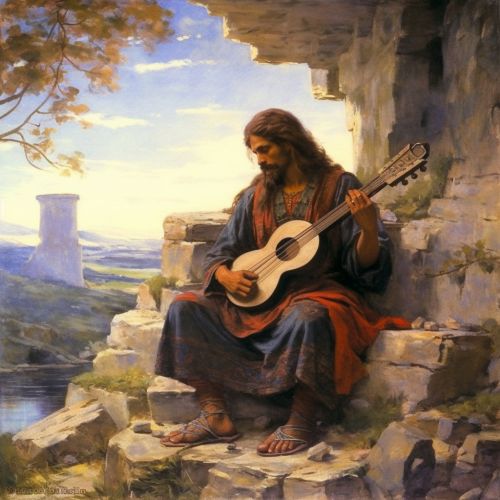Kithara
Origins and History
The Kithara is an ancient Greek musical instrument in the yoke lute family. It is a professional version of the two-stringed lyre. As opposed to the simpler lyre, which was a folk-instrument, the kithara was primarily used by professional musicians, called kitharodes. The kithara's origins are likely Asiatic[1].


The kithara was an integral part of ancient Greek music. It was one of the most important instruments in the polyphonic music of the ancient Greeks and was favored in both solo renditions and accompaniment[2]. The kithara was also used to accompany dance. It was associated with the god Apollo and the goddess Aphrodite.
Construction and Design
The kithara had a wooden soundboard, known as the "yoke," from which extended two hollow arms, or "sides". Connecting the arms was a crossbar, or "yoke," which supported the strings. The strings were of gut. They were stretched from the crossbar to the tailpiece and were plucked by a plectrum. The kithara was played while seated and held off the ground by a strap tied to the waist of the player.
Playing Techniques
The kithara could be played by strumming with the fingers, or by using a plectrum attached to a cord. The strings were tuned by adjusting wooden wedges along the cross-bar. It is likely that the kithara player, also known as the kitharode, would wear a wreath of laurel and attire which was richly decorated, as befitting the high social status of this respected professional musician.
Cultural Significance
In ancient Greek society, the kithara was considered to be a sophisticated and elegant instrument, associated with divine inspiration and the aristocracy. The kithara was also a significant symbol in ancient Greek culture, representing the power of music to influence human emotions and behaviors.
Legacy
The kithara has a significant influence on the history of music. It is considered to be the ancestor of all European stringed instruments, including the lute, the guitar, and the violin.
